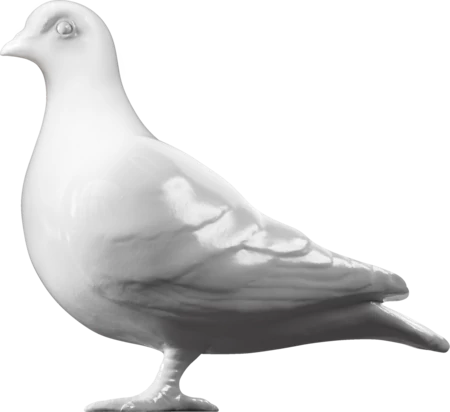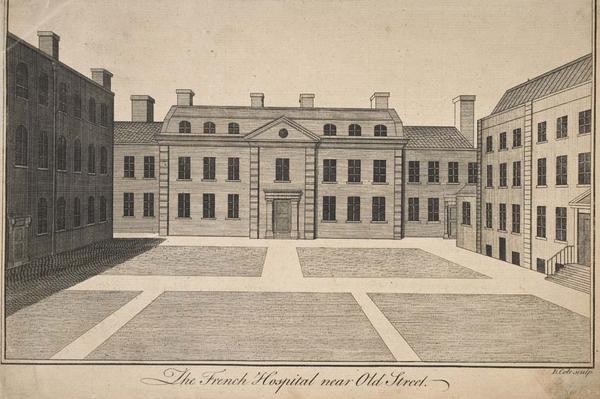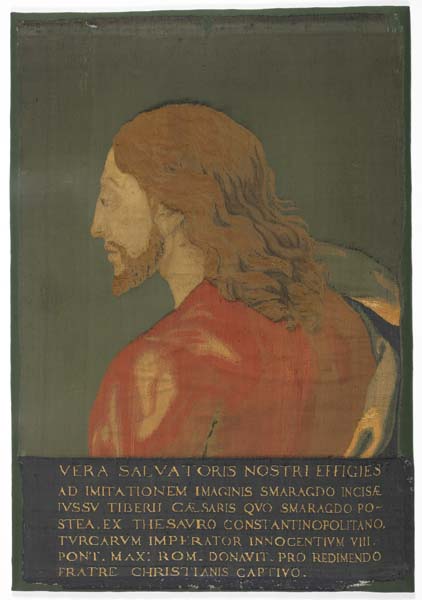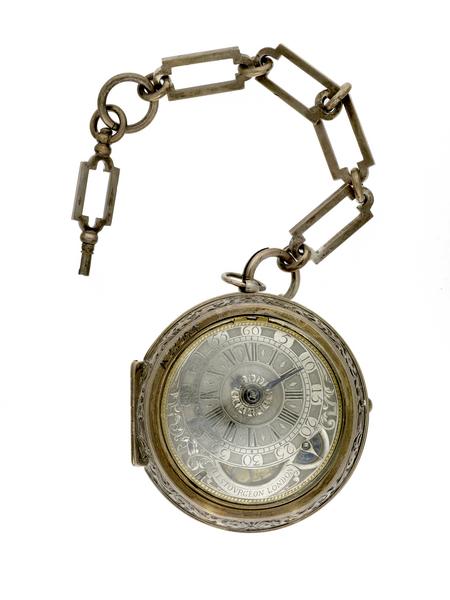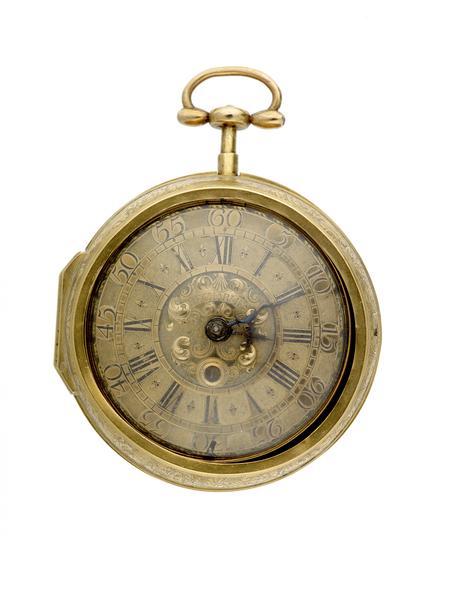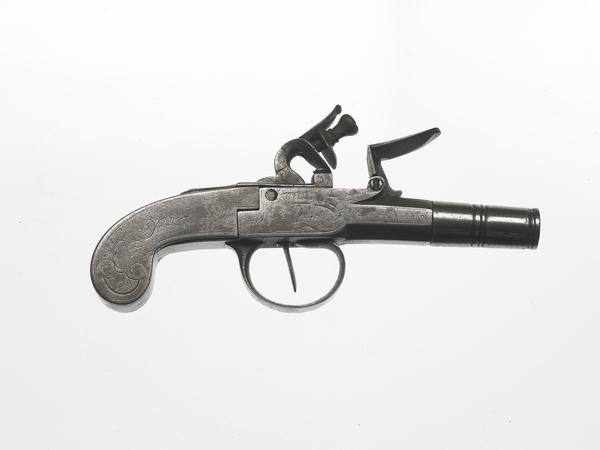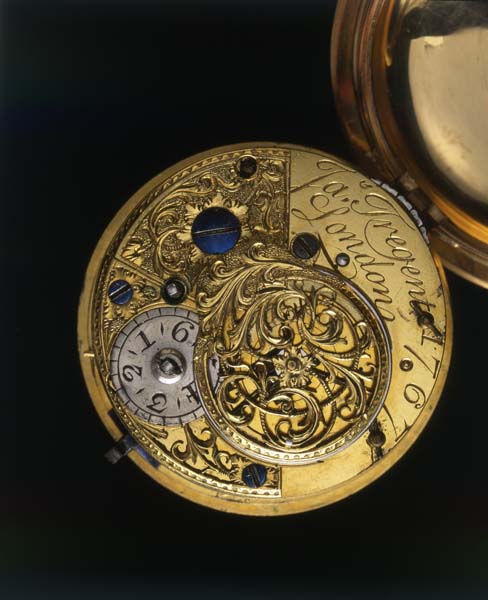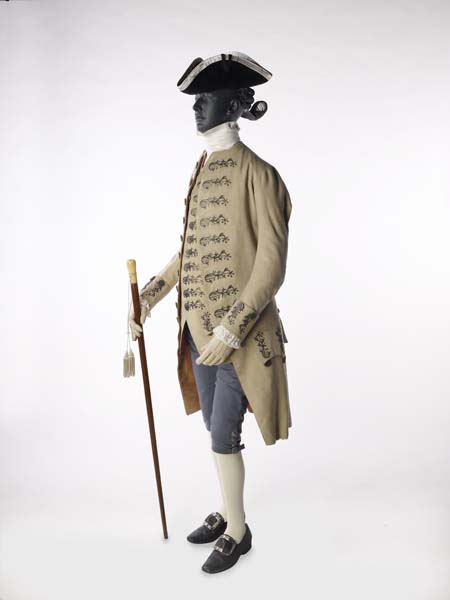The Huguenots in London
The Huguenots were French Protestants. Between 1500 and 1800, around 25,000 came to London as refugees. Fleeing religious persecution, they brought valuable trades, crafting luxuries in Soho and weaving silk in Spitalfields.
Spitalfields & Soho
1680–1700

William Hogarth's print of a silk-weaving workshop.
The reason we say ‘refugees’
The first Huguenots fled to England from Catholic-ruled France in the 16th century. After attacks on religious freedom in France worsened in the 1680s, the numbers migrating grew dramatically. Around 40,000 came to England between 1660 and 1714 – a population change unlike anything seen here before.
England was a Protestant country at the time, and the Huguenots were largely welcomed in London.
The energy they injected into the city’s economy helped. Despite many arriving poor and desperate, the Huguenots brought a variety of trades and techniques. Silk weavers set up in Spitalfields. Silversmiths, watchmakers and gunmakers did business in Soho.
The Huguenots’ legacy is widespread, from the origins of the English word ‘refugee’ to a number of exquisite treasures in our collection. You can still spot this legacy in London – in street names, descendants’ surnames and the French Protestant Church in Soho.
Who were the Huguenots?
‘Huguenots’ was the name used for French Protestant Christians. During the 16th-century religious revolution known as the Reformation, Protestants split from the Roman Catholic church. This rupture led to centuries of wars and division.
When did the Huguenots come to England?
Huguenots came to England over a long period from the 16th to 18th centuries.
In 1572, the St Bartholomew’s Day massacre of Protestants in Paris drove some Huguenots to England.
Many more Huguenots fled France in the 1680s, as the Catholic persecution of Protestants worsened. The numbers rose sharply after 1685 when the Edict of Nantes, a law that gave French Protestants religious and civil rights, was formally revoked. Huguenots continued to arrive, though in smaller numbers, into the second half of the 18th century.
The Huguenots were part of a wider movement of European Protestant refugees fleeing Catholic persecution. Walloons from Belgium and the Netherlands came to London in the 1530s, while Palatines from Germany arrived in the early 18th century.
Why did the Huguenots come to London?
Not all of the 200,000 Huguenot refugees who left France from the 1680s onwards came to England. More went to the Netherlands.
England was one of the leading Protestant countries. That made it the right religious fit.
London was also the right economic fit for those who came. Most of these Protestant refugees had lived in urban areas. Their trades required that they be in a town or city. And French designs were already fashionable in London.
How many Huguenots came to London?
It’s thought that 40,000–50,000 Huguenots arrived in England between 1660 and 1714 alone.
Roughly half are estimated to have settled in what is now Greater London. By 1700, Huguenots made up around 5% of London’s population.
“the Brick Lane Mosque, originally built as a Huguenot church in 1743”
Silk weaving in Spitalfields
The refugees settled outside the city walls. One of the largest Huguenot communities was in Spitalfields, in the East End. Some Londoners complained that French was the only language they heard in the area.
Many Huguenots there were involved in silk weaving. Our collection includes some beautiful silk clothing woven in Spitalfields around this time, including a man’s waistcoat and a gown worn by Ann Fanshawe, the daughter of the lord mayor. A William Hogarth print also shows us what a silk-weaving workshop would have looked like.
They may have worked on a luxury product, but the majority of weavers in Spitalfields were poor. They worked hard for their living. In their spare time, some were keen gardeners, pigeon fanciers or songbird-breeders. Huguenots are often associated with canaries for this reason.
By 1700, there were nine Huguenot places of worship in Spitalfields. Walk around today and there are still plenty of signs of the Huguenots. There’s Fournier Street and Fleur de Lis Street. There’s also the Brick Lane Mosque, originally built as a Huguenot church in 1743.
Huguenots in Soho
Another Huguenot community was in Soho, in the West End. Those who settled here were more middle class. There were watchmakers and clockmakers, goldsmiths and silversmiths, gunmakers and merchants, as well as lens-makers, bookbinders, cabinet-makers, printers and paper-makers.
Their legacy can also be found in our collection – pocket watches, a pistol, a silver kettle, a piqué cane. And in the Hogarth print below, Huguenot worshippers are shown leaving the French Church, which you can still visit today in Soho Square.
Other Huguenot landmarks in London once included the French Hospital in Old Street and the Westminster French Protestant School, first based on Windmill Street, near Tottenham Court Road.

Hogarth's print showing Huguenots emerging from the French Church.
Huguenot surnames
The Huguenots eventually assimilated, so that their culture seemed very similar to those around them. But the arrival of tens of thousands of Huguenot refugees left a significant mark on London, where the population was around 600,000 in 1700.
It’s previously been suggested that one in six people in England might have Huguenot heritage.
That heritage is often seen in people’s surnames. The politician Nigel Farage is one famous example. Many other surnames are associated with this past: Bosanquet, Cazenove, Courtauld, Gambier, Garrick, Minet, Portal, Tizard and Olivier.
And many more surnames may hide Huguenot names which have been anglicised: Boulanger to Baker, Blanc to White, De la Croix to Cross.
